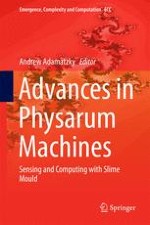2016 | OriginalPaper | Buchkapitel
Towards Collective Visual Perception in a Multi-agent Model of Slime Mould
verfasst von : Jeff Jones
Erschienen in: Advances in Physarum Machines
Aktivieren Sie unsere intelligente Suche, um passende Fachinhalte oder Patente zu finden.
Wählen Sie Textabschnitte aus um mit Künstlicher Intelligenz passenden Patente zu finden. powered by
Markieren Sie Textabschnitte, um KI-gestützt weitere passende Inhalte zu finden. powered by
